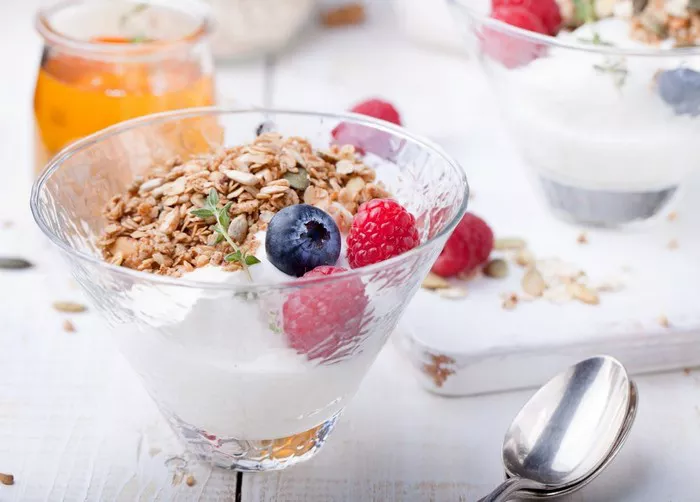Managing diabetes requires careful attention to diet, as the foods consumed can have significant impacts on blood sugar levels. Among various breakfast options, oatmeal stands out as a common choice. But is oatmeal a good option for diabetics? This comprehensive article delves into the nutritional profile of oatmeal, its impact on blood sugar, the different types of oatmeal, and how it can be incorporated into a diabetic diet.
Understanding Diabetes and Dietary Needs
Diabetes is a chronic condition characterized by high levels of sugar (glucose) in the blood. It primarily occurs in two forms: Type 1 and Type 2 diabetes. Type 1 diabetes is an autoimmune condition where the body attacks insulin-producing cells, while Type 2 diabetes is typically linked to lifestyle factors and involves insulin resistance. Proper management of diabetes requires controlling blood sugar levels through a combination of medication, physical activity, and diet.
The Nutritional Profile of Oatmeal
Oatmeal is made from oats, a whole grain that is known for its nutritional benefits. Here is a breakdown of the key nutrients found in a standard serving (1 cup cooked) of oatmeal:
- Calories: Approximately 154
- Carbohydrates: 27 grams
- Protein: 6 grams
- Fat: 3 grams
- Fiber: 4 grams
- Vitamins and Minerals: Oatmeal is rich in vitamins and minerals such as manganese, phosphorus, magnesium, copper, iron, zinc, folate, and B vitamins.
Oats also contain antioxidants, including avenanthramides, which have anti-inflammatory properties.
The Impact of Oatmeal on Blood Sugar Levels
One of the primary concerns for diabetics is how different foods affect blood sugar levels. This is often measured using the glycemic index (GI) and glycemic load (GL).
- Glycemic Index: The GI measures how quickly a food raises blood sugar levels. Foods are classified as low (55 or less), medium (56-69), or high (70 and above) GI. Plain rolled oats have a low to medium GI, typically around 55, while instant oats can have a higher GI, closer to 79.
- Glycemic Load: The GL takes into account the carbohydrate content in a typical serving of the food. A GL of 10 or less is low, 11-19 is medium, and 20 or more is high. A serving of oatmeal has a GL of around 13, which is moderate.
The fiber content in oatmeal, particularly beta-glucan, plays a significant role in moderating blood sugar spikes. Beta-glucan forms a gel-like substance in the gut, which slows the digestion and absorption of carbohydrates, leading to more stable blood sugar levels.
Types of Oatmeal and Their Effects
Oatmeal comes in various forms, and not all are created equal when it comes to managing diabetes. Here are the main types of oatmeal:
- Steel-Cut Oats: These are the least processed form of oats, cut into pieces rather than rolled. They have a lower GI due to their minimal processing, which makes them a better option for blood sugar control.
- Rolled Oats: Also known as old-fashioned oats, these are steamed and then rolled flat. They have a moderate GI and are a good option for diabetics.
- Instant Oats: These are pre-cooked, dried, and then rolled thinner than rolled oats. They have a higher GI and can cause quicker spikes in blood sugar. If choosing instant oats, it’s crucial to opt for plain, unsweetened varieties.
- Oat Bran: This is the outer layer of the oat grain, and it’s rich in fiber. Oat bran has a lower GI and can be an excellent choice for blood sugar management.
Benefits of Oatmeal for Diabetics
Rich in Fiber: The high fiber content in oatmeal, particularly soluble fiber, helps to slow the absorption of sugar into the bloodstream, reducing blood sugar spikes.
Nutrient-Dense: Oatmeal is packed with essential nutrients that support overall health and can help manage diabetes-related complications.
Satiety and Weight Management: The fiber in oatmeal helps promote a feeling of fullness, which can aid in weight management. Maintaining a healthy weight is crucial for managing Type 2 diabetes.
Heart Health: Oatmeal contains antioxidants and soluble fiber, which can lower cholesterol levels and reduce the risk of heart disease, a common complication of diabetes.
How to Incorporate Oatmeal into a Diabetic Diet
While oatmeal can be beneficial, how it is prepared and what it is paired with can significantly influence its impact on blood sugar levels. Here are some tips for making oatmeal a healthy part of a diabetic diet:
- Choose the Right Type of Oats: Opt for steel-cut or rolled oats over instant oats to maintain lower GI levels.
- Mind the Portions: Stick to a serving size of about 1/2 cup of dry oats, which equals about 1 cup cooked. Overeating can still cause blood sugar spikes.
- Limit Added Sugars: Avoid adding sugar, honey, or syrup. Instead, sweeten your oatmeal with fresh fruit or a small amount of a low-calorie sweetener.
- Add Protein and Healthy Fats: Enhance the nutritional profile and improve satiety by adding nuts, seeds, or a dollop of Greek yogurt. These additions can also help stabilize blood sugar levels.
- Include Fiber-Rich Toppings: Boost the fiber content with toppings like chia seeds, flaxseeds, or berries.
- Experiment with Savory Oatmeal: Try adding vegetables, a poached egg, or lean protein like chicken to your oatmeal for a savory twist that’s low in carbohydrates.
Potential Drawbacks and Considerations
While oatmeal has many benefits, there are potential drawbacks and considerations for diabetics:
Carbohydrate Content: Oatmeal is a carbohydrate-rich food. It’s essential to monitor portion sizes and total carbohydrate intake throughout the day to maintain blood sugar control.
Individual Responses: Blood sugar responses to oatmeal can vary between individuals. It’s helpful to monitor blood glucose levels before and after consuming oatmeal to understand how it affects you personally.
Possible Additives: Pre-packaged and flavored oatmeal often contains added sugars and unhealthy ingredients. Always read labels carefully and choose plain, unflavored varieties.
Oatmeal in the Context of a Balanced Diet
A balanced diet for diabetics should include a variety of nutrient-dense foods. Oatmeal can be a part of this diet but should be balanced with other low-GI foods, proteins, healthy fats, and plenty of non-starchy vegetables. Here are some general dietary guidelines for diabetics:
- Focus on Whole Foods: Prioritize whole, minimally processed foods like vegetables, fruits, whole grains, lean proteins, and healthy fats.
- Monitor Carbohydrate Intake: Spread carbohydrate intake evenly throughout the day to prevent blood sugar spikes.
- Choose Low-GI Foods: Incorporate more low-GI foods, such as non-starchy vegetables, legumes, and whole grains, which release glucose slowly into the bloodstream.
- Stay Hydrated: Proper hydration is essential for overall health and can help manage blood sugar levels.
- Limit Sugary and Processed Foods: Avoid foods and beverages high in added sugars and refined carbohydrates.
See also:How Many Eggs Can Diabetics Eat?
Conclusion
Oatmeal can be a beneficial addition to a diabetic diet when chosen and prepared thoughtfully. Its high fiber content, particularly beta-glucan, helps to stabilize blood sugar levels, while its rich nutrient profile supports overall health. By selecting less processed forms of oatmeal, controlling portions, and pairing it with protein and healthy fats, diabetics can enjoy oatmeal as a nutritious and satisfying breakfast option.
However, individual responses to oatmeal can vary, so it’s important for diabetics to monitor their blood sugar levels and consult with their healthcare provider or a registered dietitian to personalize their diet plan. When included as part of a balanced diet, oatmeal can be a valuable tool in managing diabetes and promoting long-term health.
Related topics:
Is it Good for Diabetics to Eat Bananas?

























